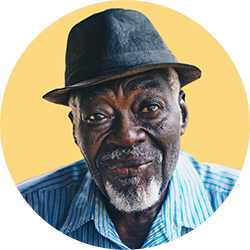Greater acuity, greater fall risk
- one full workday each week for the community’s clinical staff is spent on fall-related issues8
- a single fall with EMS, ER, and hospital stay costs a family on average $4,8469,10,11
- the average cost of a fall for an operator is $5,26712
In caring for this increasingly older population with more acute care requirements, communities need proven solutions with a multitude of benefits. Ones that not only detect and help prevent falls, but also empower staff to provide higher-quality and reduce risk, while helping families and communities save on costs.
The staffing dilemma
A huge risk for communities as resident acuity increases is not having staff to adequately care for the increased need. This is especially challenging when decline in physical or cognitive abilities happens suddenly, and care assessments are not performed frequently enough because it’s difficult to measure the amount of care the resident requires.
Not only does this pose concerns for resident safety and well-being, but it also adds to the stress of an overburdened and under-resourced labor force: you have more and more residents suddenly needing more and more care, without the additional staff to provide that care. And when you can’t show that the care needs have increased because you can’t easily, consistently, and reliably measure the care you provide, you can’t make the case for increasing your staffing. It perpetuates the acuity creep cycle, magnifying lacking staffing resources. In a recent survey, 92% of operators said they were experiencing a staffing shortage.
When you can’t show that the care needs have increased because you can’t easily, consistently, and reliably measure the care you provide, you can’t make the case for increasing your staffing. It perpetuates the acuity creep cycle.
To help solve this staffing dilemma, operators need new data insights, powered by the ability to measure how care is provided—every time—automatically and accurately. Next-gen AI can deliver this solution, helping operators align labor to better meet residents’ needs, alleviating strain, and elevating care.
Escalating liability risk
What steps can operators take to reduce the risks of increasing acuity in senior living?
Operators have options when it comes to mitigating the risks of increasing acuity for residents, and technology plays a crucial role. AI is revolutionizing how data can be used to solve issues in senior living, including fall prevention, staffing optimization, and operational efficiency. SafelyYou offers SafelyYou Clarity™ for a clear understanding of real-time resident care needs, helping operators identify when risk—and care needs—are increasing. It’s next-gen AI that allows operators to align labor to care plans, providing better-quality care for residents and optimizing resources—which both reduces risk and helps solve their current staffing dilemma.
AI is revolutionizing how data can be used to solve issues in senior living, including fall prevention, staffing optimization, and operational efficiency.
While Clarity helps identify risk and needs for residents, SafelyYou offers additional solutions to mitigate those risks, including SafelyYou Respond™, which not only detects but also helps prevent falls, and changes communities’ approach to fall management. With its world-leading AI video technology and 24/7 remote clinical support, SafelyYou Respond™ enables on-site staff to see how and why a fall happened—and empowers them to develop interventions to help keep it from happening again. In doing so, community care teams begin to shift from seeing falls as inevitable to embracing a culture of fall prevention. SafelyYou Respond™ is proven to reduce falls by 40% and fall-related ER visits by 80%, improving resident well-being and quality of life, while mitigating risk for operators, and reducing costs for families and communities. And it’s trusted by 40% of the largest senior living providers.
As operators face the risks of increasing acuity—as well as the challenge of finding staff to help meet these growing care demands—SafelyYou offers innovative solutions that empower operators to reduce risk, provide higher-quality care, and improve workflows. For more on how we can help your communities, reach out to us at [email protected].
1 Bonvissuto, Kimberly. “Senior living occupancy could reach pre-pandemic levels next year: NIC.” McKnight’s Senior Living, October 5, 2023.
2 Conerly, Bill. “Senior living demand: Strong demographics weakened by strong health.” Forbes, December 3, 2019.
3 “Facts and Figures.” AHCA, NCAL.
4 Regan, Tim. “Average assisted living resident manages more than 14 chronic conditions.” Senior Housing News, September 14, 2022.
5 DeMeno, Rhonda. “The risky business of acuity creep in assisted living.” WTWCO.com, March 15, 2023
6 “Dementia as a risk factor for falls and fall injuries among nursing home residents.” Journal of the American Geriatrics Society. 2003.
7 “Keep on your feet—preventing older adult falls.” Centers for Disease Control and Prevention. March 24, 2023.
8 SafelyYou 2022 Cost of Falls Report.
9 Rivelli, Elizabeth. “Does insurance cover ambulance rides?” Forbes Advisor. December 1, 2023.
10 Amin, Krutika. Claxton, Gary. Cotliar, Dustin. Cox, Cynthia. Rae, Matthew. Schwartz, Hope. “Emergency department visits exceed affordability threshold for many consumers with private insurance.” Peterson-KFF Health System Tracker. December 16, 2022.
11 Choi, Bryan Y. Choi, Namkee G. DiNitto, Diana M. Kunik, Mark E. Marti, Nathan C. “Fall-related emergency department visits and hospitalizations among community-dwelling older adults: examination of health problems and injury characteristics.” BMC Geriatrics. November 11, 2019.
12 SafelyYou 2022 Cost of Falls Report.
13 CNA Aging Services Claim Report: 11th Edition. 2022.
14 Regan, Tim. “Senior living operators see staffing improving in 2023 despite widespread shortages.” Senior Housing News. January 20, 2023.
15 DeMeno, Rhonda. “The risky business of acuity creep in assisted living.” WTWCO.com, March 15, 2023.






